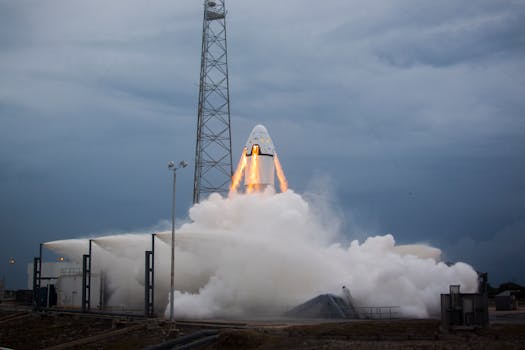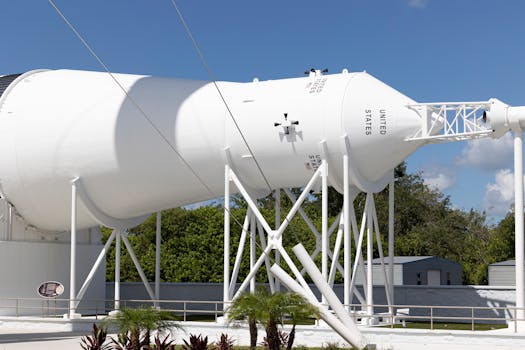The Future of Satellites is an exciting and rapidly evolving field, with significant advancements in technology and innovation. The future of satellites is revolutionizing global connectivity, enabling faster, more reliable, and more secure communication, navigation, and remote sensing. As we look to the future, it’s clear that satellites will play an increasingly important role in shaping our world.
The use of satellites has become an essential part of modern life, from navigating with GPS to communicating with loved ones across the globe. With the advancement of technology, satellites are becoming smaller, more efficient, and more cost-effective, making them more accessible to a wider range of users. The future of satellites is expected to be shaped by several key trends, including the proliferation of small satellites, the development of new launch technologies, and the increasing use of satellite constellations.
One of the most significant trends in the future of satellites is the proliferation of small satellites. These satellites are typically smaller and less expensive than traditional satellites, making them more accessible to a wider range of users. Small satellites are being used for a variety of applications, including Earth observation, communication, and navigation. They are also being used to provide internet connectivity to remote and underserved communities, helping to bridge the digital divide.
The Impact of Satellite Constellations

Satellite constellations are another key trend in the future of satellites. These constellations involve launching multiple satellites into orbit, which work together to provide global coverage and connectivity. Satellite constellations are being developed by several companies, including SpaceX, OneWeb, and Amazon’s Kuiper Systems. These constellations have the potential to provide high-speed, low-latency internet connectivity to anyone, anywhere in the world, and are expected to have a significant impact on the future of global communication.
The development of new launch technologies is also expected to play a significant role in shaping the future of satellites. Reusable launch vehicles, such as those developed by SpaceX and Blue Origin, are making it possible to launch satellites into orbit more efficiently and at a lower cost. This is expected to make satellites more accessible to a wider range of users, and to enable the launch of more complex and sophisticated satellite systems.
The future of satellites is also expected to be shaped by advances in satellite technology, including the development of more efficient propulsion systems, advanced materials, and more sophisticated communication systems. These advances are expected to enable the development of more capable and sustainable satellite systems, which will be able to provide a wider range of services and applications.
Applications of Satellites

Satellites have a wide range of applications, from navigation and communication to remote sensing and Earth observation. They are used to provide critical services, such as weather forecasting, disaster response, and search and rescue operations. Satellites are also used to monitor the environment, track climate change, and manage natural resources. The future of satellites is expected to see the development of even more innovative and sophisticated applications, as the technology continues to evolve and improve.
The use of satellites in navigation is one of the most well-known applications. GPS, or Global Positioning System, is a network of satellites that provide location information to GPS receivers on the ground. This information is used for a wide range of applications, from navigation and mapping to precision agriculture and surveying. The future of satellites is expected to see the development of even more advanced navigation systems, including the European Union’s Galileo system and China’s Beidou system.
Challenges and Opportunities

While the future of satellites is full of opportunities, there are also several challenges that need to be addressed. One of the most significant challenges is the issue of space debris, which poses a significant threat to the sustainability of space activities. Space debris includes old satellites, rocket parts, and other objects that are no longer in use, and can cause significant damage to operational satellites and other spacecraft. The future of satellites will require the development of more sustainable and responsible practices, including the design of satellites that can be easily de-orbited and disposed of at the end of their life.
Another challenge facing the future of satellites is the issue of regulation and governance. As the use of satellites becomes more widespread, there is a need for clear and effective regulation to ensure that the benefits of satellite technology are realized while minimizing the risks. This includes regulation of the use of satellite spectrum, the deployment of satellite constellations, and the protection of the space environment. The future of satellites will require international cooperation and agreement on these issues, in order to ensure that the benefits of satellite technology are available to all.
In conclusion, the future of satellites is an exciting and rapidly evolving field, with significant advancements in technology and innovation. The future of satellites is expected to be shaped by several key trends, including the proliferation of small satellites, the development of new launch technologies, and the increasing use of satellite constellations. As the technology continues to evolve and improve, we can expect to see even more innovative and sophisticated applications of satellites, from navigation and communication to remote sensing and Earth observation.
See more:
